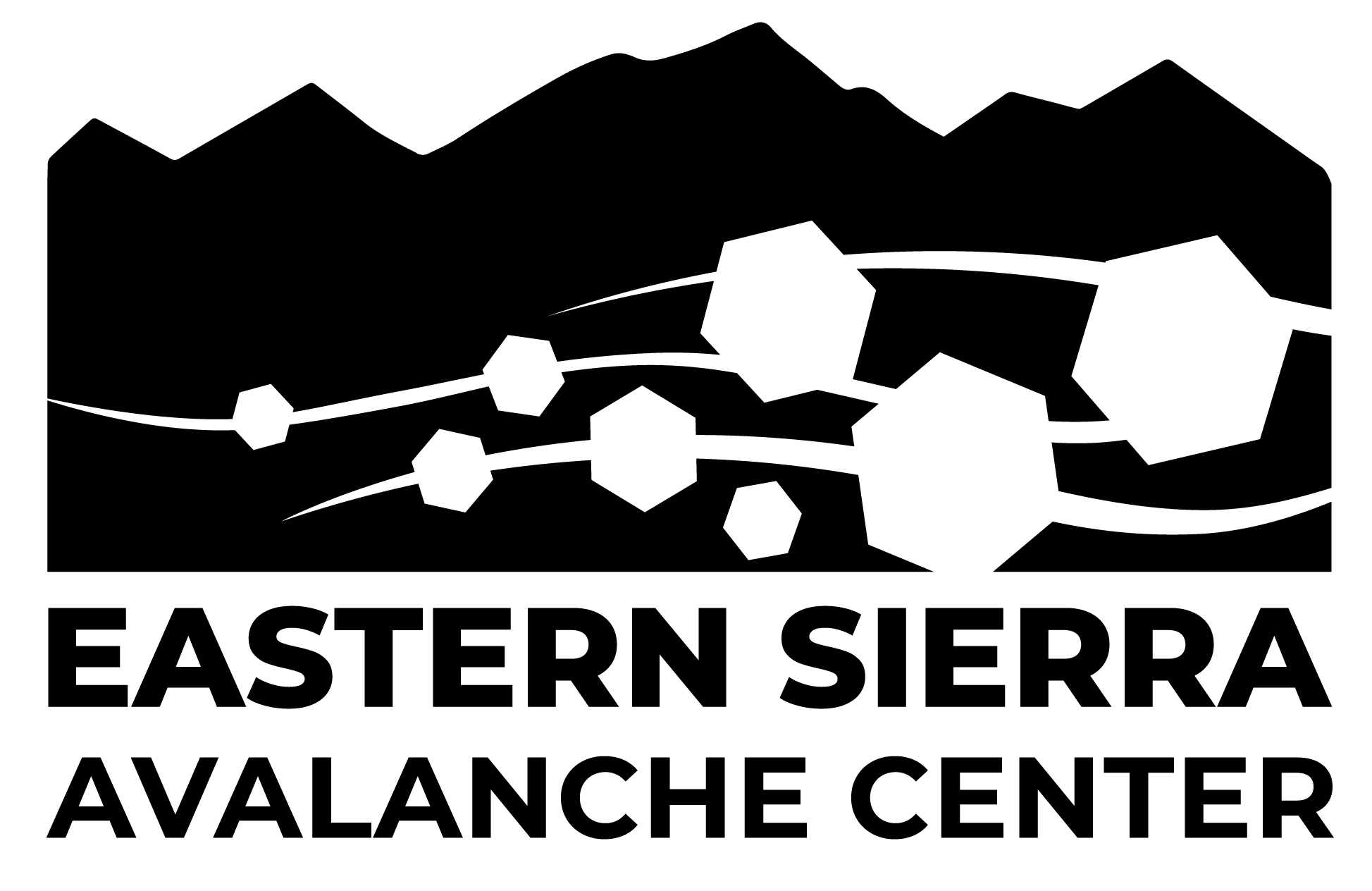Basic Information
Observation Details
Observation Date:
February 11, 2022Submitted:
February 11, 2022Observer:
Mike Phillips | Key ObserverZone or Region:
Mammoth LakesLocation:
San Joaquin RidgeSigns of Unstable Snow
Recent Avalanches?
None ObservedCracking?
None ExperiencedCollapsing?
None ExperiencedSnow Stability
Stability Rating:
Very GoodConfidence in Rating:
HighStability Trend:
SteadyKey Points
I ventured along the San Joaquin Ridge today to look for signs of increasing loose wet instabilities on E, SE and SW aspects at a somewhat middle elevation band without too much influence from surrounding rock features. I didn’t find anything concerning. Skies were clear for the duration of my tour with light winds gusting to moderate out of the NE. Temps remained above freezing between 8:30 and 1:30.
- Leaving Main Lodge shortly after 8:00 a.m. it was 0c under clear skies with light winds out of the NE.
- By 9:00 a.m. I was on a small, open, low angle E facing slope below treeline at 9400′ as the ridge becomes more defined with a dark rock band on its L flank where the snow was not softening. However, nearby on a similar slope with tree cover, the snow had begun to transition and ski penetration was a few inches.
- I dug a quick pit at 10:30 at about 10200′ on an E facing slope that had begun to soften with 8cm boot penetration. I probed and found 160cm of snow that felt right side up and mostly homogenous.
- The air temp was +5c at this point and winds were light. The snow surface temperature was +1.0c and 20 cm down from the surface it was -2.0c.
- I dug down only 60cm to look at the transition between the moist surface snow and what was beneath. The surface was a soft, thin melt-freeze crust with some facets mixed in. There was about 2″ of moist, clustered melt forms below that crust. The remainder of my pit was 1F hard, small, wind-packed rounded grains that were dry.
- Interestingly I found several re-frozen flow fingers in the test wall of the pit. These are indicators that free water was/is running through the upper portion of the snowpack from the melting surface snow.
- Skiing this E facing slope at 1100 was good, but nothing to write home about. Soft nieves penitentes (fins) were manageable, but the frozen flow fingers became more apparent on the descent. While soft and predictable the sensation and sound could best be described as chunky. Ski penetration increased as I descended to 9400′. Some small rollerballs could be initiated with hard turns on steeper convexities, but nothing very big or running far. Traversing to a more south facing sidewall against some rocks I found smoother, more supportable snow which I followed into the flats.
- I also checked out an open, low angle SW aspect hoping to find a smoother surface follow down below tree line, which I did not. I was too early at 1200 for this to soften enough to brave more penitentes. Same story here though, somewhat moist surface snow and dry snow just a few inches down.
Overall this area is highly wind affected and features the same three dimensional surface that other observers have been reporting recently. There appeared to be some smooth snow in the N facing gullies, but I didn’t plan to venture into that kind of terrain with hard snow today. Overall the snow surface just seems tired and in need of a refresh. The aspects I skied are in a transitional state that provided some respite from hard, smooth and consequential northerly slopes, but are their own special kind of variable. I would expect that if this current heatwave continues the surface snow on these aspects will become wetter, looser and start to show signs of instability, but today I observed no immediate signs of unstable wet snow on solar aspects.
Media
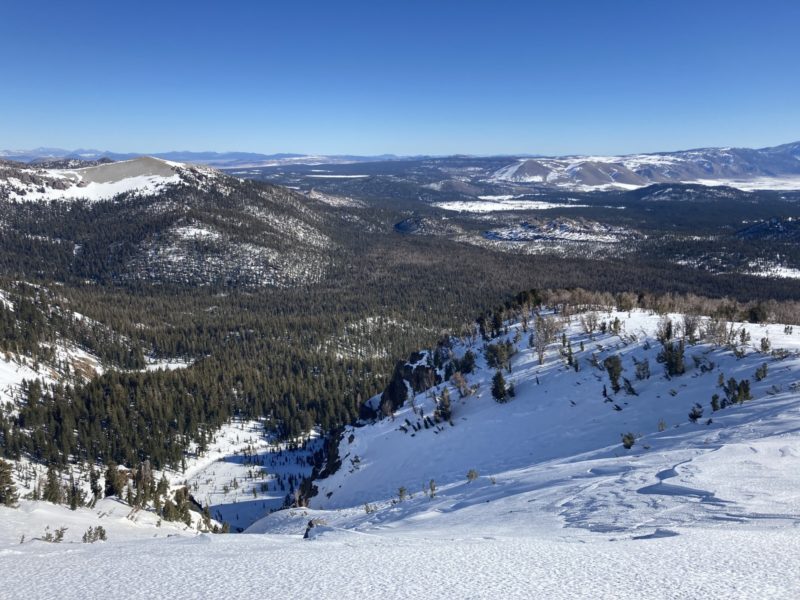
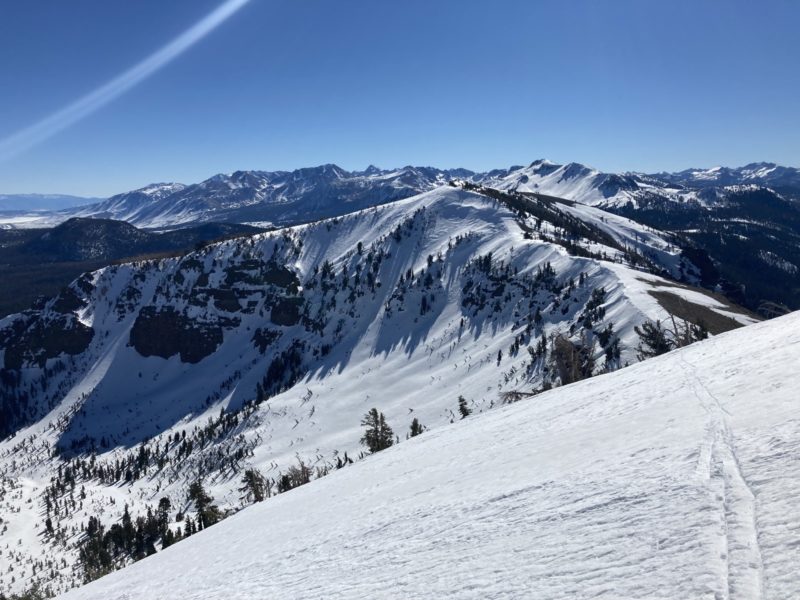
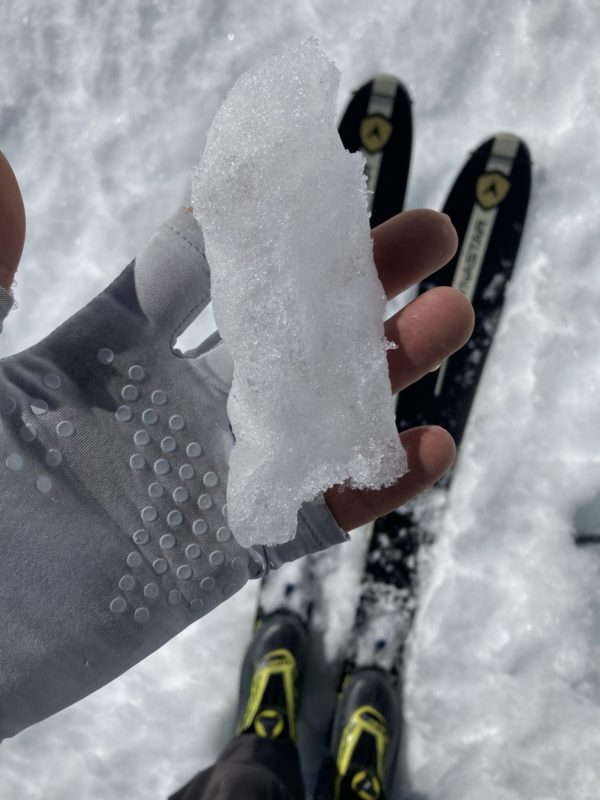
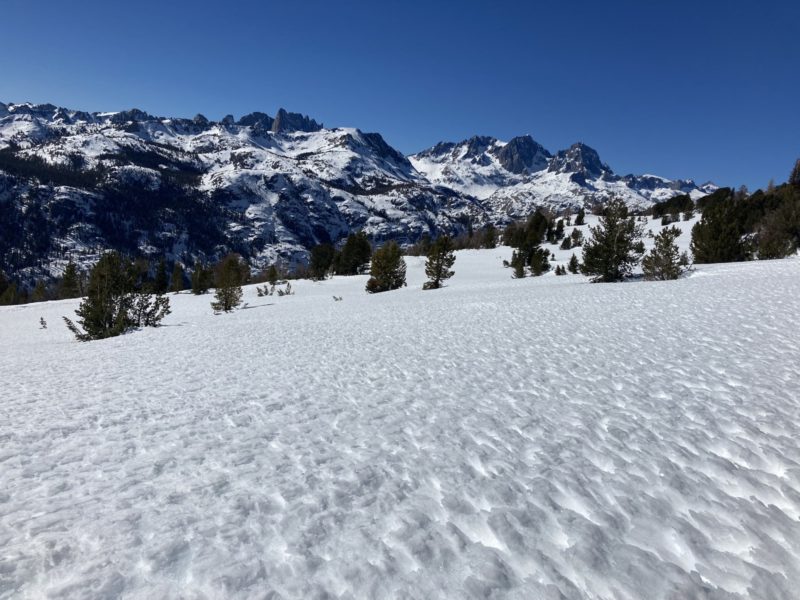
Advanced Information
Weather Summary
Cloud Cover:
ClearTemperature:
Above freezingWind:
Light , NE
Winds were generally light, gusting to moderate on the ridgetop especially at Deadman Pass where there was a notable gap wind.
Close